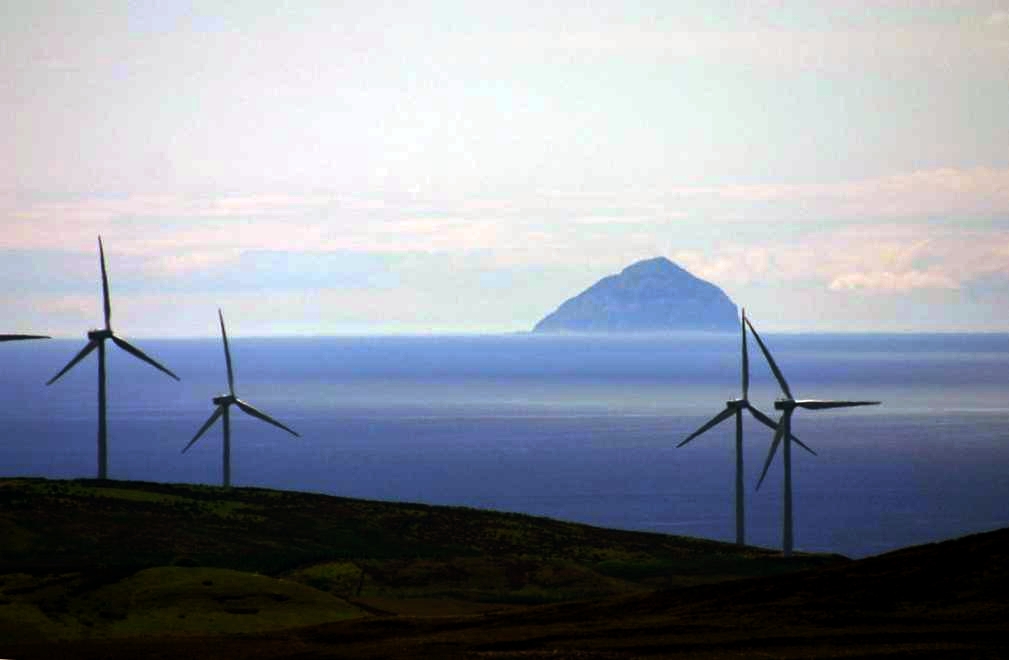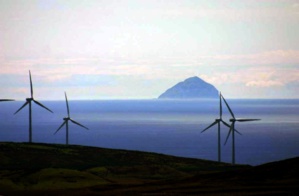The total volume of electricity generation in the OECD countries as a whole remained at the same level (0.3% growth in the previous year). The growth of solar and wind generation by almost 1% offset the lower generation from the fossil fuels (including coal, gas, oil, burned renewable energy sources such as biomass and ethanol), as well as from hydropower.
Nuclear power generation in the OECD countries decreased by 0.5%, the total number amounted to 1 878.9 TWh (a decrease of 9.4 TWh). This decrease in generation in OECD Europe is offset by growth in the Asian OECD countries.
The share of power generation volume in OECD countries at the expense of renewable resources, with the exception of hydro generation and combustible renewable resources, increased to 21.5% compared to 20.6% in 2014.
Amount of wind power generation increased the by 77 TWh in the past year; 61 TWh of the rise accounts for OECD European countries. Solar generation increased by 27 TWh - the main growth of 10.4 TWh came from the OECD countries of the Americas.
Crude oil production (including crude oil, natural gas liquids, raw materials for oil refining, etc.) in the OECD countries increased by 4.8% in 2015, reaching 1 145 million tons (25.2 million barrels per day).
This growth is largely associated with the production in the United States, which grew by 9.2% (an increase of more than 50 million tons, or 370 million barrels). As a result, the US accounts for more than half of total production in the OECD countries.
Such data on the growth of production can cause a lot of questions from those who follow the news from the United States. Recently, there were a lot of reports about the problems of local energy companies. The fall in oil prices triggered a wave of small producers’ bankruptcies, and a high volume of debt in the oil and gas sector. Therefore, the investment in the development of new and existing projects has been reduced.
The prospects for oil industry are quite gloomy. Yet seemingly, it is not going to stop, as consumption of oil products in OECD countries rose by 1.2%.
Natural gas production in the OECD countries also increased by 2.3% last year.
As is the case with oil, the United States became a leader in the production growth: it grew by 5.3%, or 38.6 billion cubic meters of gas. The total production volume amounted to 768.8 billion cubic meters of gas.
In the European OECD countries, production fell by 2.3%; OECD Asia and Oceania had a decline of 1.8%.
Consumption increased by 1.6% due to use of gas in power generation in the American and European OECD countries.
source: cleantechnica.com
Nuclear power generation in the OECD countries decreased by 0.5%, the total number amounted to 1 878.9 TWh (a decrease of 9.4 TWh). This decrease in generation in OECD Europe is offset by growth in the Asian OECD countries.
The share of power generation volume in OECD countries at the expense of renewable resources, with the exception of hydro generation and combustible renewable resources, increased to 21.5% compared to 20.6% in 2014.
Amount of wind power generation increased the by 77 TWh in the past year; 61 TWh of the rise accounts for OECD European countries. Solar generation increased by 27 TWh - the main growth of 10.4 TWh came from the OECD countries of the Americas.
Crude oil production (including crude oil, natural gas liquids, raw materials for oil refining, etc.) in the OECD countries increased by 4.8% in 2015, reaching 1 145 million tons (25.2 million barrels per day).
This growth is largely associated with the production in the United States, which grew by 9.2% (an increase of more than 50 million tons, or 370 million barrels). As a result, the US accounts for more than half of total production in the OECD countries.
Such data on the growth of production can cause a lot of questions from those who follow the news from the United States. Recently, there were a lot of reports about the problems of local energy companies. The fall in oil prices triggered a wave of small producers’ bankruptcies, and a high volume of debt in the oil and gas sector. Therefore, the investment in the development of new and existing projects has been reduced.
The prospects for oil industry are quite gloomy. Yet seemingly, it is not going to stop, as consumption of oil products in OECD countries rose by 1.2%.
Natural gas production in the OECD countries also increased by 2.3% last year.
As is the case with oil, the United States became a leader in the production growth: it grew by 5.3%, or 38.6 billion cubic meters of gas. The total production volume amounted to 768.8 billion cubic meters of gas.
In the European OECD countries, production fell by 2.3%; OECD Asia and Oceania had a decline of 1.8%.
Consumption increased by 1.6% due to use of gas in power generation in the American and European OECD countries.
source: cleantechnica.com






